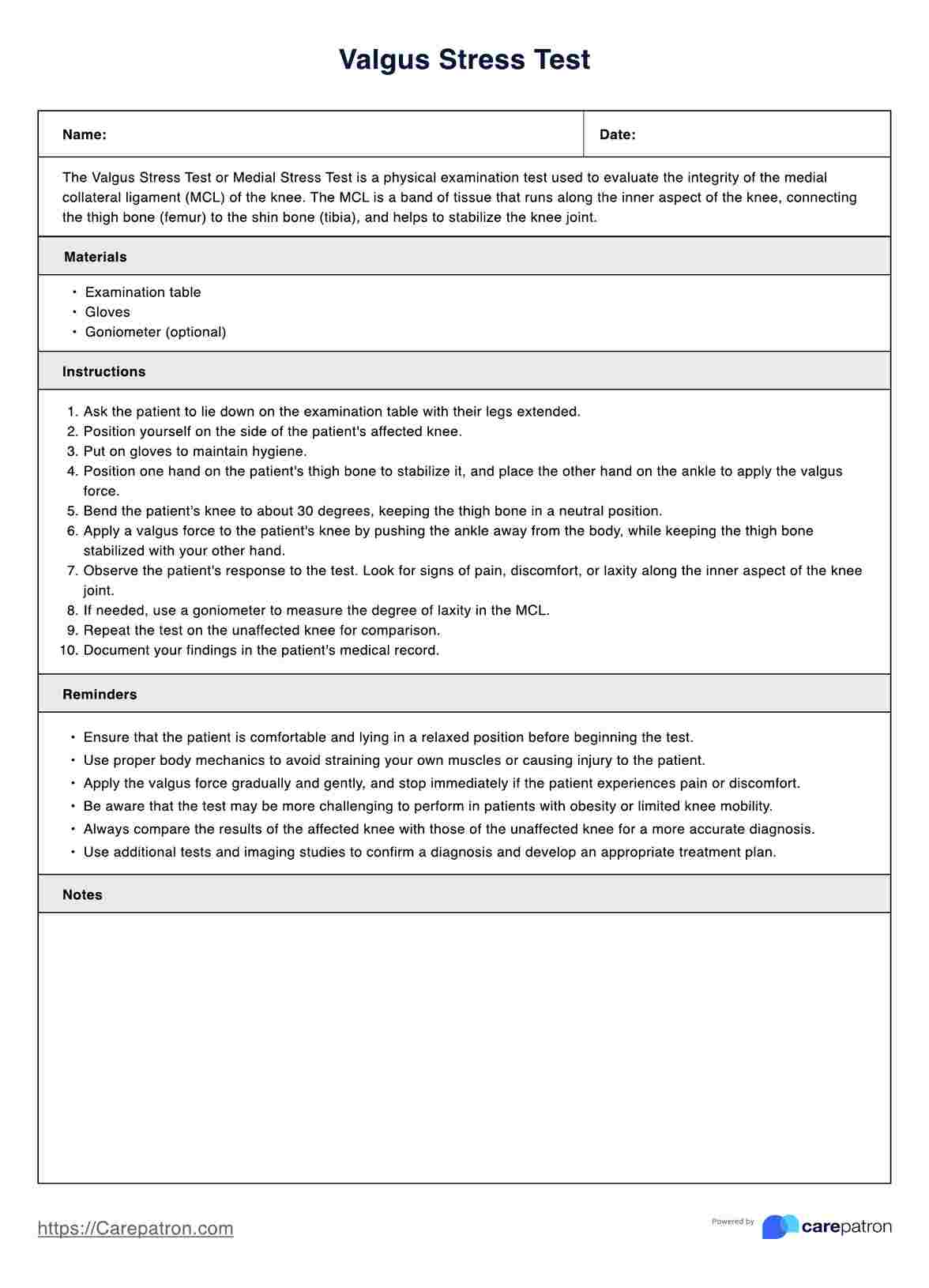The Valgus Stress Test doesn't have a scoring system. Instead, practitioners use the results to assess the stability of a patient's knee joint and ligaments. To evaluate the test, practitioners need to look for signs of laxity or pain in the MCL.

Valgus Stress Test
Discover how to conduct the Valgus Stress Test accurately with our comprehensive step-by-step PDF guide and example.
Valgus Stress Test Template
Commonly asked questions
The Valgus Stress Test is useful for evaluating the knee joint and ligament structures. It can help identify MCL injuries, assess the overall stability of the knee joint, determine if further evaluation is needed, and track patient progress over time.
The Valgus Stress Test is used to assess the integrity of the MCL, which is a ligament that runs along the inside of the knee joint. This test puts the MCL under tension and allows practitioners to identify signs of laxity or pain that could indicate an injury.
EHR and practice management software
Get started for free
*No credit card required
Free
$0/usd
Unlimited clients
Telehealth
1GB of storage
Client portal text
Automated billing and online payments











